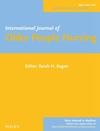Handgrip strength and the 5-time chair-stand test are the two important muscle strength measures run through the whole sarcopenia diagnosis algorithm. There is a lack of evidence to confirm which muscle strength measures have a higher detection rate of sarcopenia among Chinese older adults, which is a challenge for community workers to choose the muscle strength measures and to identify more sarcopenia in clinical practice.
We aimed to investigate the prevalence and diagnostic agreement of sarcopenia based on handgrip strength and the 5-time chair-stand test among Chinese community-dwelling older adults.
This cross-sectional study sampled 1027 community-dwelling older adults from Hunan, China. We used handgrip strength and the 5-time chair-stand test to assess participants' muscle strength and used gait speed and bioimpedance analysis (BIA) to assess physical performance and skeletal muscle mass, respectively. The kappa values of the agreement test were used to evaluate the agreement of handgrip strength and 5-time chair-stand tests in the assessment of sarcopenia.
A total of 1027 participants were included in this analysis including 337 males and 690 females with an average age of 70.35 ± 7.24 years. The prevalence of possible sarcopenia, confirmed sarcopenia and severe sarcopenia based on handgrip strength was 50.8%, 20.3% and 14.5% respectively, while the corresponding prevalence for using the 5-time chair-stand test was 27.6%, 10.8% and 10.9%. The kappa value of the consistency test between handgrip strength and 5-time chair-stand test in the assessment of possible sarcopenia, confirmed and severe sarcopenia was 0.26, 0.51 and 0.62, respectively (p < 0.001 for all).
The prevalence of possible sarcopenia, confirmed sarcopenia and severe sarcopenia based on handgrip strength was significantly higher than that of the 5-time chair-stand test. We recommend handgrip strength as the preferred method of muscle strength measurement for Chinese community-dwelling older adults and use 5-time chair-stand tests when handgrip strength is not available.
The findings provide information and suggestions to healthcare providers for choosing the muscle strength measures to detect more sarcopenia in clinical practice. Compared with the 5-time chair-stand test, handgrip strength has a better performance to identify sarcopenia in Chinese community-dwelling older adults.


